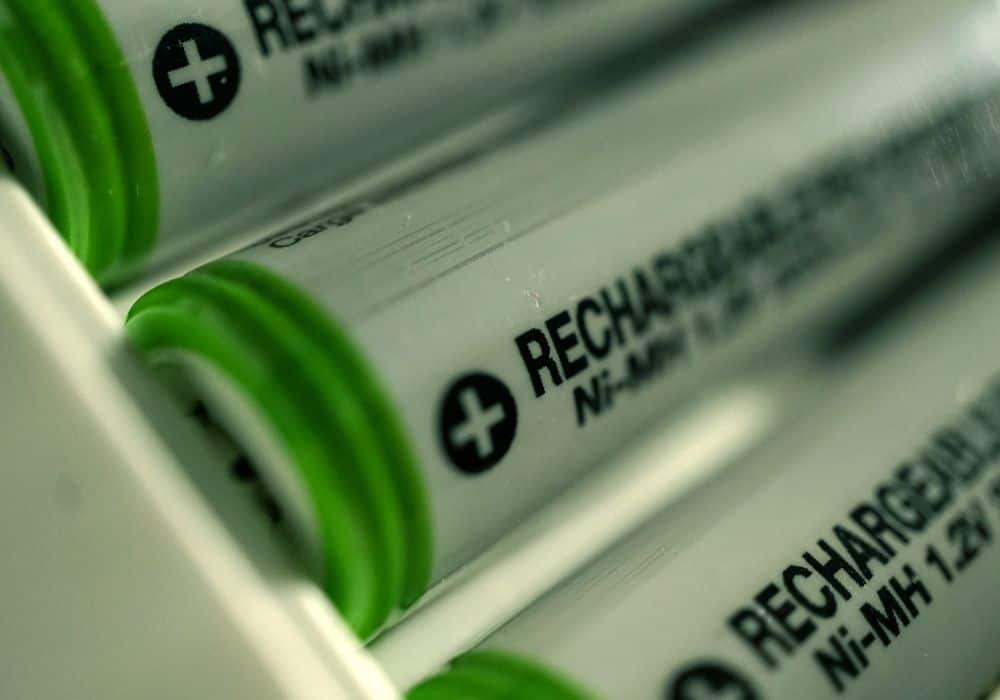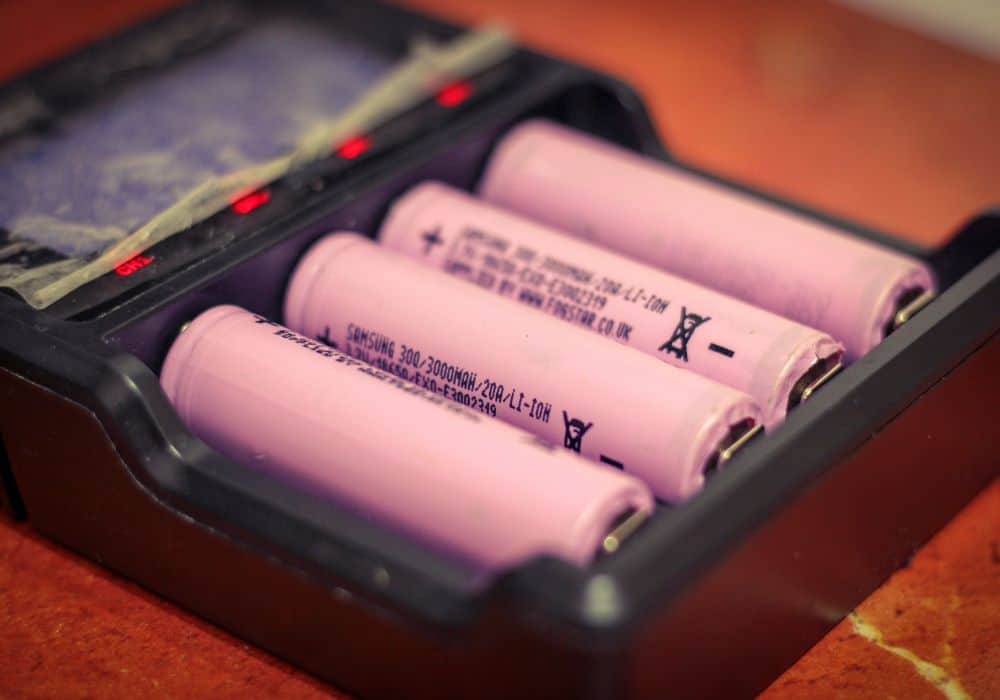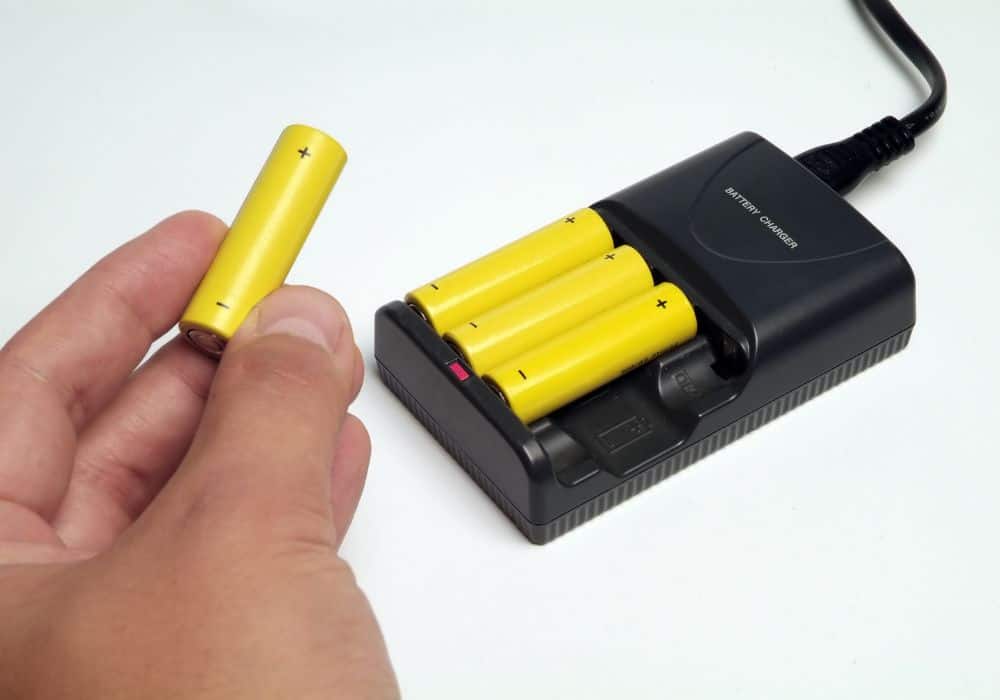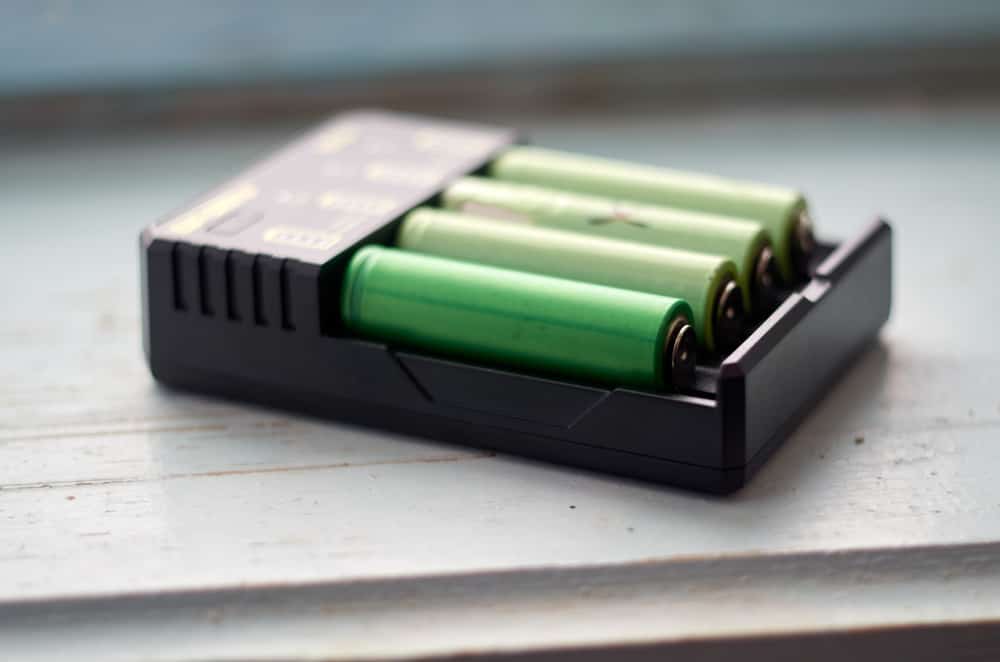If you have devices that use rechargeable batteries, you can save money and the environment as they can be used for a lot longer than non-rechargeable batteries. But, how do you recharge your rechargeable batteries correctly? Knowing how to charge your batteries correctly can help them last longer.
In this article, you will not only find information on how to recharge a rechargeable battery but also on the different types of rechargeable batteries and key vocabulary related to them.
Read on to find out everything you need to know about rechargeable batteries.
Table of Contents
Rechargeable Battery Vocabulary

There is a vast amount of technical terms used to describe rechargeable batteries and their capabilities. Below, you will find explanations for the most commonly used terms, which can help you when choosing a rechargeable battery for your device.
Charge Cycles
A charge cycle means the cycle of complete charge and discharge of a battery. All batteries have several charge cycles they can go through. When the maximum number is reached, the battery will need to be replaced.
mAh Capacity
MAh means milliamperes per hour and is used to measure the capacity of a battery. It shows the maximum amount of energy the battery can potentially deliver in a single discharge. Although there is a range of external factors that can affect the running time, in a nutshell, batteries with a higher mAh capacity have a longer running time.
Memory Effect
If a battery is often charged before the stored energy in the battery has fully depleted, we get a memory effect. The battery can memorize the shorter charging cycle and this can potentially shorten the operating time.
Self-Discharge
Even when not in use, the chemical reactions inside the battery still expend its energy. This is what self-discharging means and why batteries come out of storage with a lower charge than they went in.
Shelf Life
This term is used to describe how long the battery can be left idle before it becomes unusable. Batteries self-discharge when left in storage, but they discharge at different levels.
Voltage
Voltage (V) is one of the most important terms you need to know and it refers to the electric potential of the battery. The voltage varies depending on the chemistry and size of the battery. Household batteries, such as AA batteries usually have 1.5 volts, lithium coin batteries three volts, while bigger batteries can have up to nine volts.
Choosing a battery with the right voltage is important as the device might not operate properly if the voltage is too low. Rechargeable batteries keep their voltage for a long time, while it drops in non-rechargeable batteries over time.
Types of Rechargeable Batteries

There are different types of rechargeable batteries available on the market. While some batteries can be depleted fully, others should not. Knowing more about the battery type you have, can help you to recharge it properly and prolong its life.
1. Lead-Acid
These batteries date back to the mid-19th century, but are still popular today because they are cheap and last around three to five years. Often used in electric vehicles, for example, golf carts.
2. Nickel-Cadmium (NiCd)’
NiCD batteries are often used in high-drain devices such as digital cameras or power tools because of their high electrical current. They can be recharged quickly, but they also discharge quickly. The batteries last for a long time, between ten and fifteen years.
3. Nickel-Metal Hydride (NiMH)
A NiMH battery can last up to 1,000 charge cycles. They have a better capacity than NiCd batteries, but some of them have a high rate of self-discharge.
4. Lithium-Ion (Li-ion)
Because they are light, Li-ion batteries are used in mobile phones, laptops, and other portable devices. They usually last for around 300-500 charge cycles and can hold a charge longer than many other rechargeable batteries.
5. Lithium-Ion Polymer (LiPo)
These batteries are a new alternative to Li-ion. They are more expensive but have a far better capacity.
6. Alkaline
Not all alkaline batteries are rechargeable but some are and they come in all the standard alkaline battery sizes. They are cost-effective as they can handle 25-50 charge cycles and each full charge can power your device about as long as a standard, single-use alkaline battery.
How to Charge Your Battery Using a Battery Charger.
All you need to charge your batteries is a charger. Most hardware and electronics stores sell A/C chargers or you can order one online. For information about the best chargers on the market at the moment, you might like to watch this charger review before buying.
Step One: Choosing The Right Charger
Get the right charger for the type of batteries you want to charge. A/C adapters, which plug into a basic power outlet at home, are often used to charge rechargeable batteries. They come in a variety of sizes from AAA batteries to D batteries. Some chargers can be adapted to fit different size batteries.
You can also opt for a rapid charger. They differ from regular chargers because often, they don’t have a charge-control mechanism. This mechanism slows or stops the flow of energy to the battery when it is nearing full charge to avoid overcharging. Without this mechanism, batteries can get overcharged easily and this reduces their life span.
Step Two: Checking Your Batteries
Before you charge your batteries, check that they can be recharged. If you charge single-use batteries, it can cause corrosion and damage to the charger. You should only ever charge batteries that have been labeled rechargeable.
Before you recharged a new set of batteries, let them deplete completely before you recharge them. This will reduce the possible memory effect. You can use a battery tester to check the charge status before recharging.
Step Three: Preparing The Charger
Plug the charger into a power outlet. If you are using an A/C charger, in most of them, the power light comes on automatically. However, some chargers will need to be switched on using the “On/Off” switch.
Before you use a new charger, read the manufacturer’s instructions. In the instructions, you will find details of the time it takes to fully charge batteries. It should also explain the meaning of the different indicator lights. Most importantly, you should pay attention to the safety information included in the instructions booklet.
Step Four: Inserting The Batteries
Insert the batteries you want to charge into the charger so that the positive ends of the batteries are in contact with the positive terminals of the charger and the negative ends connect with the negative terminals.
Most chargers will have a diagram that shows you the correct orientation of the batteries.
Step Five: Charging The Batteries
Let the batteries charge fully. Most chargers will have an indicator light that changes color when the battery is fully charged. Avoid disrupting the charge by unplugging the charger or taking the batteries out early. This can reduce the battery’s life.
Step Six: Finishing The Process
When the charging is completed, remove the batteries as soon as possible. Leaving them on for longer than necessary will cause them to overcharge, which can also reduce battery life.
Trickle Charging
It is possible to use a technique called trickle charge with your rechargeable batteries. This is a technique that lowers the charge to around 10% of the battery’s capacity. This is usually enough for the battery to stay fully charged, before the discharge resulting in diminished capacity is triggered.
Most manufacturers would not recommend using trickle charging regularly. However, if you can adjust the charge rate on your charger, using a lower charging rate can be effective in keeping your batteries charged.
Is it Possible to Recharge Non-Rechargeable Batteries?

Although you will find instructions on how to charge disposable batteries on the internet, and it can be done, charging them is not recommended. This applies to all single-use batteries because there are risks associated with charging them.
Recharging a battery can cause gas to be produced inside the battery. Single-use batteries are usually sealed and recharging them can build the pressure inside the battery, rupturing the seal. The gas may also cause the battery to leak or even explode.
Summary
Rechargeable batteries can be a great way to save money and the environment since they can be recharged several times before they need to be replaced. Charging them correctly and using a rechargeable battery charger can keep your battery healthy and working at full capacity as long as possible.
You should always use the correct charge for the type of batteries you want to recharge and always follow the manufacturer’s instructions when using a battery charger. Before you charge the battery for the first time, allow it to discharge fully, and always avoid overcharging your battery.
We hope you have found the answers you were looking for on charging a rechargeable battery in this article. However, if you still have questions about the topic, you can write them in the comments section.
